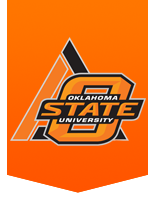Remember food safety when firing up the grill
BLA bla Bla blA BLA bla Bla blA BLA bla Bla blA BLA bla Bla blA BLA bla Bla blA BLA bla Bla blA BLA bla Bla blA BLA bla Bla blA BLA bla Bla blA BLA bla Bla blA BLA bla Bla blA BLA bla Bla blA BLA bla Bla blA BLA bla Bla blA BLA bla Bla blA
By Laci Jones, FAPC Communications Services Student
(Stillwater, Okla. – July 23, 2014) With the summer heating up, many Oklahomans may be heating up their grill, as well. Summer is typically a time of creating fun-filled memories and delicious meals. However, if the meal is not prepared properly, it could be a source of foodborne disease.
According to the USDA Food Safety & Inspection Service, foodborne illness peaks during the summer months, as harmful bacteria tend to grow faster in warmer, more humid weather.
Food safety isn’t just for the food manufacturing plants, but it is important in the home as well, said Peter Muriana, food microbiologist for Oklahoma State University’s Robert M. Kerr Food & Agricultural Products Center.
“Everything we eat has some degree of foodborne illness risk associated with it,” Muriana said. “Generally, those people who practice good food handling practices are less likely to acquire foodborne illness, but they are still not completely invulnerable to it. When consumers practice risky food consumption practices and get away with it, there is often a sense that the caution was unwarranted, and they may continue those practices until someone gets sick.”
FAPC wants Oklahomans to have a safe and fun summer and suggests the following food safety tips when preparing favorite, summertime meals.
Preparing foods for the grill
- Completely thaw meat and poultry in the refrigerator before grilling so it cooks evenly.
- Never thaw raw meats on a countertop or in a sink. Thawing at room temperature increases the risk of bacteria growth at the surface of the meat, even though the interior may still be chilled.
- Marinate foods in the refrigerator, not on the counter, where bacteria can multiply.
- Discard leftover marinade. Do not use it on cooked foods as a dressing or dipping sauce because it could contain bacteria.
- Do not use the same utensils, platters and basting brushes for both raw and cooked meat. Juices from the raw meat may contaminate cooked food.
- Wash your hands thoroughly before and after preparing any food product.
Cooking food on the grill
- Use a food thermometer to make certain the meat is thoroughly cooked.
- Cook meat to proper temperatures by using the following internal temperature guide:
- Beef, pork, lamb and veal: 145 degrees Fahrenheit (Allow 3 minutes to rest before consuming).
- Ground meats: 160 degrees Fahrenheit.
- Chicken: 165 degrees Fahrenheit.
Storing and eating leftovers
- Leftovers should be stored in the refrigerator within two hours after cooking is complete.
- Leftovers should be divided into smaller portions and stored in shallow, airtight containers. They should be eaten within three to four days.
- If large amounts are left, consider freezing for later use. Do not wait until the leftovers have been in the refrigerator for several days to freeze. Frozen leftovers should be eaten within six months.
- Reheat leftovers to 165 degrees Fahrenheit and never taste leftover foods that look or smell strange.
For more information on FAPC, visit www.fapc.biz, email fapc@okstate.edu or call 405-744-6071.
- ### -
Oklahoma State University is a modern land-grant university that prepares students for success. OSU is America’s Brightest Orange. Through leadership and service, OSU is preparing students for a bright future and building a brighter world for all. As Oklahoma’s only university with a statewide presence, OSU improves the lives of people in Oklahoma, the nation, and the world through integrated, high-quality teaching, research, and outreach. As America’s Healthiest Campus, OSU is committed to the health and well being of its students, employees and the community. OSU has more than 36,000 students across its five-campus system and more than 25,000 on its combined Stillwater and Tulsa campuses, with students from all 50 states and around 120 nations. Established in 1890, OSU has graduated around 255,000 students to serve the state of Oklahoma, the nation and the world.







